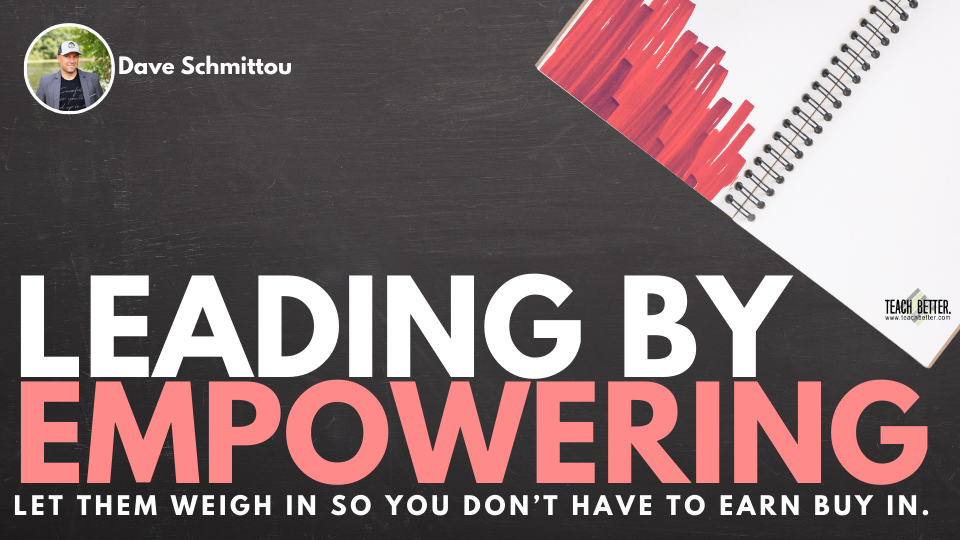TL;DR:
- Certain skills are necessary for students to be successful beyond high school.
- Many schools no longer address these skills because of their focus on standards and mandated tests.
- Backward design helps prepare K-12 students for the future.
“As societies become more complex in structure and resources, the need of formal or intentional teaching and learning increases. As formal teaching and training grow in extent, there is the danger of creating an undesirable split between the experience gained in more direct associations and what is acquired in school. This danger was never greater than at the present time.”
– John Dewey
Education as a Necessity of Life
Democracy and Education: An Introduction to the Philosophy of Education (1916)
Is there a divide between what students learn in school and the skills needed for success beyond high school? For over a century, teachers and administrators have asked “What should students know and be able to do?” Reading, writing, mathematics, science, and social studies have become common courses taught in U.S. schools.
“In an ideal world, a high school diploma from any high school in the nation would be a valid and reliable certification that a student was ready for college, work, and life” (Pinkus, 2009, p. 2). What would the ideal high school graduate look like? Society has changed and the complexity described by John Dewey in the early 1900s has exploded in 2022. President Franklin D. Roosevelt (1940) shared in an address, “We may not be able to prepare the future for our children, but we can at least prepare our children for the future.”
A K-12 Experience Should Provide Students With:
- Adaptability
- Civic Literacy
- Communication Skills
- Community Service
- Digital Citizenship
- Digital Literacy
- Employment Skills (i.e., Resumé, Application and Interview Skills)
- Entrepreneurship
- Healthful Living Skills
- Media Literacy
- Personal Financial Literacy
- Problem Solving Skills
- Social and Emotional Learning Skills
We can debate the skills above. And we could add additional skills to the list. It is evident by the number of students who do not complete college and the lack of employability skills by entry-level employees that the K-12 experience needs to be examined. Some school districts offer a variety of these skills or lessons in high school. State or local requirements may require schools to offer these courses as electives.
Curriculum priorities should be aligned with the skills that adults need in order to become productive members of society. Click To TweetCurriculum priorities should be aligned with the skills that adults need in order to become productive members of society. Unfortunately, many schools teach key skills, essential questions, and content that is important to know, but not as relevant as it was fifty years ago. Educators across the U.S. have started to develop a Profile of a Graduate. This activity allows staff, students, and families to identify the skills students need upon high school graduation. The process that leads to developing a profile of a graduate allows educators and community members to reflect on the aims of a K-12 education.
Focusing on Standards and Tests
Educators teach standards, focus on test prep, and prepare students for unit exams. If we are preparing students for life, then the assignments and assessments should be aligned to the skills students need in order to succeed. Each year, thousands of high school graduates earn a grade point average (GPA) which demonstrates they have learned the content deemed necessary for participation in society. Content knowledge is still important, but we need to teach students to play the game.
Imagine if an adult could not manage their personal finances. What if someone could not secure employment because of a lack of interview skills? A robust civics education was once a priority in K-12 schools. “Nationally, we are at a crossroads. For our democracy to continue, future generations must know its structures, ideals, history and ways to engage within their respective communities” (Reidel, 2021). Several schools no longer teach civics at the elementary level, in exchange for higher reading and mathematics state test scores.
[scroll down to keep reading]
Using Backward Design
Backward design can support school systems in preparing all learners for the future. If curriculum design teams identify the end in mind, educators can design from that point back to elementary school. We cannot develop most of the skills highlighted in this article in a one-year high school elective course. Students should not be permitted to opt-out of learning these skills by selecting one elective course over another.
“No longer an end point in the public education system, the American high school is now being asked to prepare all its students for the postsecondary schooling and training required for full economic and social participation in U.S. society” (Balfanz, 2009, p. 18). We should ask, “What skills does an adult need to have full economic and social participation in U.S. society?” Educators should implement these skills throughout the K-12 experience.
Questions For Teachers, Administrators, and Policymakers
- What does a high school diploma from our school district represent?
- Is there a divide between what students learn in K-12 schools and the skills needed for success beyond high school?
- Which skills does an adult need to have full economic and social participation in U.S. society?
About Steven Weber
Dr. Steven Weber is the Associate Superintendent for Teaching and Learning with Fayetteville Public Schools (AR). His areas of research include curriculum design, formative assessment, professional learning, and school leadership.



